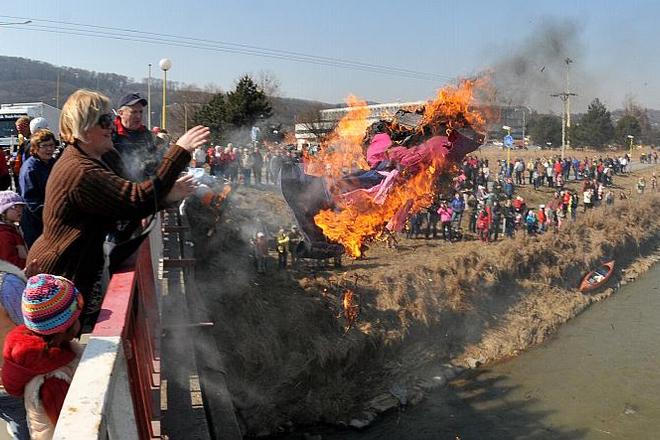A SLAVIC goddess variously named Maržanna, Mara, Maržena, Morana, Moréna, Mora, Marmora or Morena is associated with winter, death and nightmares. Some scholars equate her with the Latvian goddess named Māra who is said to take a person’s body after death. Some medieval Christian sources, such as the Mater Verborum, compare the Slavic goddess to the Greek goddess Hecate, associating her with sorcery. The ancient tradition of symbolically drowning Morena to bid farewell to winter and welcome in a new spring has survived in some parts of Slovakia.
The hiking club in Prešov in eastern Slovakia has been organising this ritual for 56 years to say goodbye to winter and symbolically welcome the new hiking season.
“We will part with winter and several Morenas made by Prešov pupils and members of hobby clubs will be floated down the Torysa River after water sportsmen symbolically unlock the waters of the river,” Juraj Fiľakovský from the Šariš regional council of the Club of Slovak Hikers told the TASR newswire, adding that Morena is known from folklore as a female form. By burning her, putting her into water and sending her away, winter can be symbolically ended, he said.
The event also included a competition for creativeness in depicting Morena and those making the fanciest figurines were rewarded. The figurines are usually made of straw on a wooden skeleton and clad in female dress. Fiľakovský added that about 20 figurines were made for this year’s event, adding that participants meet in the morning to “unlock the river”, then moved to the bridge near the city auditorium by kayak or on foot and then burned the figurines and sent them floating down the river.



 Moreny, Prešov (source: SITA)
Moreny, Prešov (source: SITA)